Related Research Articles

Sir Sean Connery was a Scottish actor. He was the first actor to portray fictional British secret agent James Bond on film, starring in seven Bond films between 1962 and 1983. Connery originated the role in Dr. No (1962) and continued starring as Bond in the Eon Productions films From Russia with Love (1963), Goldfinger (1964), Thunderball (1965), You Only Live Twice (1967) and Diamonds Are Forever (1971). Connery made his final appearance in the franchise in Never Say Never Again (1983), a non-Eon-produced Bond film.
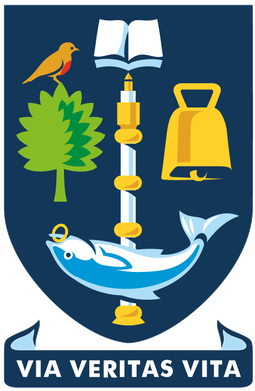
The University of Glasgow is a public research university in Glasgow, Scotland. Founded by papal bull in 1451 [O.S. 1450], it is the fourth-oldest university in the English-speaking world and one of Scotland's four ancient universities. Along with the universities of St Andrews, Aberdeen, and Edinburgh, the university was part of the Scottish Enlightenment during the 18th century. Glasgow is the largest university in Scotland by total enrolment and with over 19,500 postgraduates the second-largest in the United Kingdom by postgraduate enrolment.
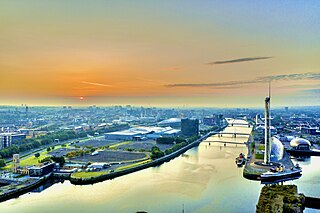
Glasgow is the most populous city in Scotland, located on the banks of the River Clyde in west central Scotland. The city is the third-most-populous city in the United Kingdom and the 27th-most-populous city in Europe. In 2022, it had an estimated population as a defined locality of 632,350 and anchored an urban settlement of 1,028,220.
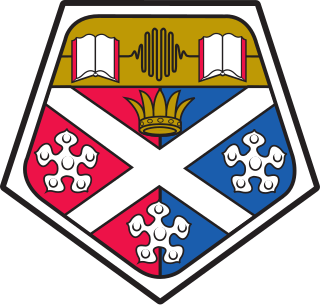
The University of Strathclyde is a public research university located in Glasgow, Scotland. Founded in 1796 as the Andersonian Institute, it is Glasgow's second-oldest university, having received its royal charter in 1964 as the first technological university in the United Kingdom. Taking its name from the historic Kingdom of Strathclyde, its combined enrollment of 25,000 undergraduate and graduate students ranks it Scotland's third-largest university, drawn with its staff from over 100 countries.
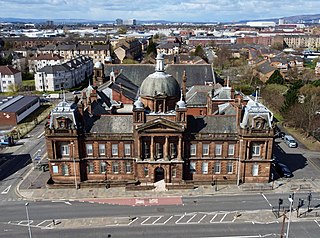
Govan is a district, parish, and former burgh now part of southwest Glasgow, Scotland. It is situated 2+1⁄2 miles west of Glasgow city centre, on the south bank of the River Clyde, opposite the mouth of the River Kelvin and the district of Partick. Historically it was part of the County of Lanark.
Upper Clyde Shipbuilders (UCS) was a Scottish shipbuilding consortium, created in 1968 as a result of the amalgamation of five major shipbuilders of the River Clyde. It entered liquidation, with much controversy, in 1971. That led to a "work-in" campaign at the company's shipyards, involving shop stewards Jimmy Airlie and Jimmy Reid, among others.

Scottish Television is the ITV network franchisee for Central Scotland. The channel — the largest of the three ITV franchises in Scotland — has been in operation since 31 August 1957 and is the second-oldest franchise holder in the UK that is still active.

The Fairfield Shipbuilding and Engineering Company, Limited, was a Scottish shipbuilding company in the Govan area on the Clyde in Glasgow. Fairfields, as it is often known, was a major warship builder, turning out many vessels for the Royal Navy and other navies through the First World War and the Second World War. It also built many transatlantic liners, including record-breaking ships for the Cunard Line and Canadian Pacific, such as the Blue Riband-winning sisters RMS Campania and RMS Lucania. At the other end of the scale, Fairfields built fast cross-channel mail steamers and ferries for locations around the world. These included ships for the Bosporus crossing in Istanbul and some of the early ships used by Thomas Cook for developing tourism on the River Nile.

Clifford Leonard Clark "Cliff" Hanley was a journalist, novelist, playwright and broadcaster from Glasgow in Scotland. Originally from Shettleston in the city's East End, he was educated at Eastbank Academy.

Raymond Charles "Crusoe" Robertson-Glasgow was a Scottish cricketer and cricket writer.
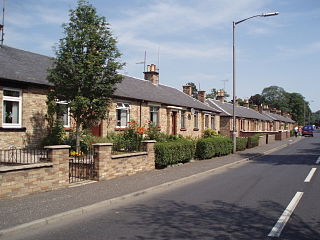
Lugar is a small village in East Ayrshire, southwest Scotland. Lugar is in Auchinleck Parish, Kyle District, Ayrshire. It is 1.5 miles (2.4 km) ENE of Cumnock, and about 1-mile (1.6 km) from Cronberry and 2 miles (3.2 km) from Gaswater. Lugar was a station on the Mauchline and Muirkirk branch of the Glasgow and South Western Railway. Lugar is about 16.5 miles (26.6 km) SE of Kilmarnock.

Seawards the Great Ships is a 1961 British short documentary film directed by Hilary Harris. It won an Oscar in 1962 for Best Short Live Action Subject, the first Scottish film to win an Academy Award.
Brian Whittingham was a Scottish writer, editor and lecturer on creative writing.
Jimmy Airlie was a leading Scottish trade unionist. While a shop steward, along with Sammy Gilmore, Sammy Barr and Jimmy Reid he was particularly remembered for his role as chairman of the Upper Clyde Shipbuilders work-in committee of 1971.
The Bowler and the Bunnet was a Scottish television documentary programme on STV, directed and presented by Sean Connery. It is the only film ever directed by Connery.

The Fairfield Heritage Centre is situated on Govan Road, Glasgow, Scotland. Built as the offices of Fairfield Shipbuilding and Engineering Co Ltd between 1889 and 1891 the building was used as the principal offices for successive owners of the adjacent shipyard until 2001, when it was vacated by BAE Systems Marine. After deteriorating unused for eight years it was bought by social enterprise charity Govan Workspace in 2009. Following a restoration costing over £5.8m it was re-occupied as a heritage centre and commercial offices in 2013.
This is a list of events in Scottish television from 1967.
Events from the year 1968 in Scotland.

Sir Iain Maxwell Stewart (1916–1985) LLD (Strathclyde), BSc, MINA, MINE, MIMEch.E was a Scottish industrialist with a strong interest in modernising industrial relations.
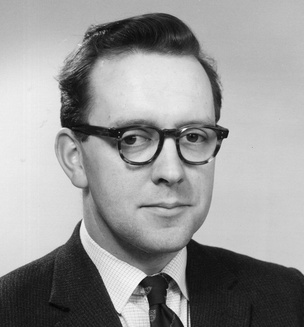
Thomas Graham Brown was a Scottish engineer who was most notable for collaborating in the design of the first medical ultrasound machine along with the obstetrician and designer Ian Donald, a physician at the University of Glasgow and industrial designer and obstetrician John MacVicar.
References
- ↑ Whatever Happened at Fairfields?, by Sydney Paulden and Bill Hawkins, published by Gower Press, 1969.
- ↑ Dudgeon, Piers (2012). Our Glasgow: Memories of Life in Disappearing Britain. Headline. ISBN 9780755364466 . Retrieved 14 March 2018.
- ↑ "Scottish Studies Foundation, The Bowler and the Bunnet". www.scottishstudies.com. Scottish Studies Foundation. Archived from the original on 2 March 2018. Retrieved 1 March 2018.